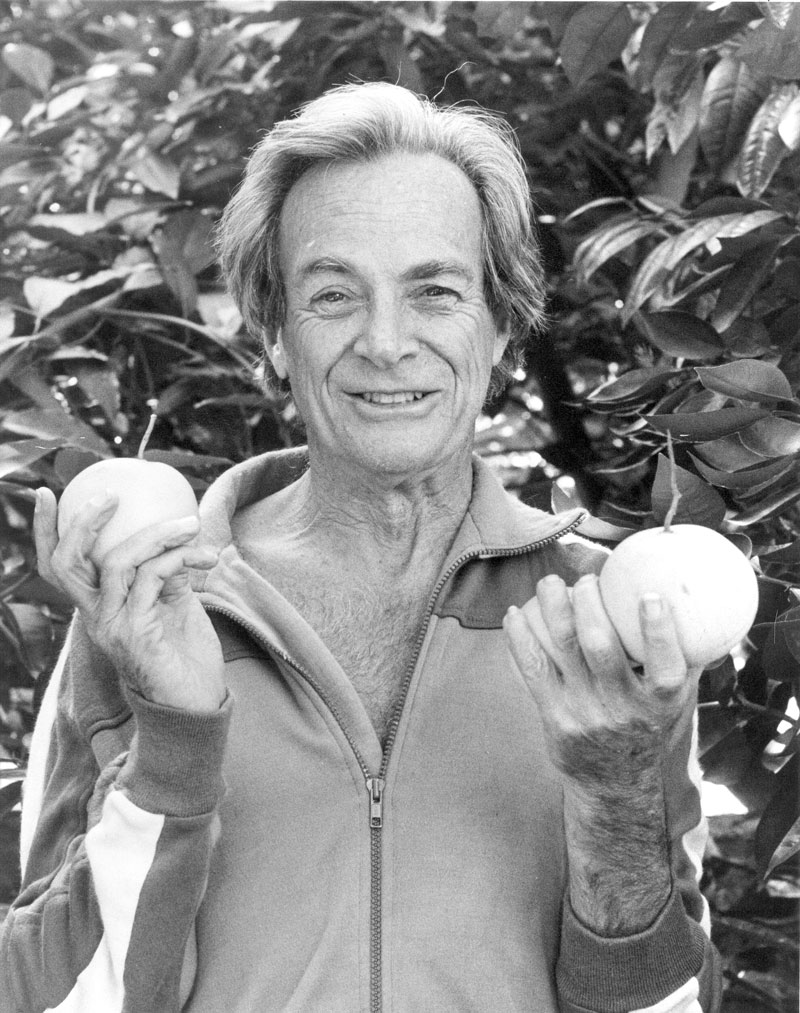Richard Feynman – Physicist, Artist, Nobel Laureate 1918-1988
By Kathleen McDonnell
Richard Feynman is among most illustrious occupants of Mountain View cemetery. As a theoretical physicist Feynman made numerous cutting edge contributions to human understanding of the universe. One of the most significant was his development of a new formulation of quantum mechanics called quantum electrodynamics (QED). Through his groundbreaking research, he developed a mathematical framework that allowed for the precise calculation of particle interactions and their corresponding probabilities. In recognition of his influential work, Feynman received the Nobel Prize in Physics in 1965, jointly awarded with Julian Schwinger and Sin-Itiro Tomonaga.
As a high school student Feynman was a math prodigy, but as an undergraduate at Massachusetts Institute of Technology he decided he preferred physics, and earned a PhD from Princeton in 1942. During the war he was drafted to work on the Manhattan project in Los Alamos, and afterwards joined the faculty at Cornell, but left for a position at CalTech in 1950. He lived in Altadena until his death in 1988, and was a leading light among a bohemian mixture of local scientists and artists who socialized together. While at Cornell he spent a sabbatical year in Rio de Janeiro where he learned Portuguese and how to play the bongos, and he was alway ready to play at parties. He famously made a deal with Altadena artist Jirayr Zortrhian to teach him quantum physics in return for lessons in art. Zorthian never learned much physics, but Feynman became quite an accomplished artist.

Richard Feynman attained popular televised fame when he was called to testify at the Rogers Commission investigating the space shuttle Challenger disaster. He dropped an o-ring seal used on the rocket engine into a glass of ice water, demonstrating how cold temperature caused the seal to lose elasticity and thus its effectiveness as a gasket, causing a fuel leak that led to the fatal explosion.
Feynman’s dedication to teaching was evident throughout his career. His Feynman’s Lectures on Physics, published in 1964, remains a cornerstone of physics education worldwide. His innovative and intuitive approach to physics, as well as his ability to communicate complex concepts in a simple and entertaining manner, made him a beloved figure in the scientific community and beyond.
Those who would like to know more about this amazing man should read his highly entertaining autobiographies: Surely You’re Joking, Mr. Feynman and What Do You Care What Other People Think.
